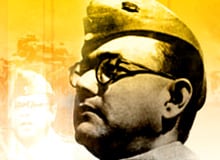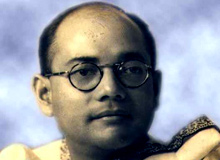Failed Assassinations Attempts
A desperate disease requires a dangerous remedy. Assassinations have really changed the world because it is a sudden attack by a group of people or an individual who opposes a popular idea or act. If you look back into history you will find that there are many great politicians and visionaries who have been assassinated because their ideas or their believes went against some individuals who decided to step ahead to uproot their ideas at any given cost. In other words, assassinations are nothing but the very last attempt by people who would like to protest against the growing trend and idea by the particular political figure.
The history of assassination is not just hundred years old but in fact it dates back to 586 BC when the first murder on earth was recorded. Since that time, assassination has been used as a powerful tool to change the course of history. If you take up any old scriptures from any country you will find that there are records of assassinations written by great writers and poets. The father of Alexander and Julius Caesar were one of the popular victims that were assassinated in the early times and than there are scriptures of planned assassination in book by Indian military adviser Chanakya. However, not all assassinations have succeeded because such kind of acts require a lot of planning, strategy and courage because the chances of getting arrested and capital punishment are very likely. Although, there are very few failed assassination attempts let’s go deeper into the world of assassins and know more about some failed assassinations that really shook the world.
1. Ronald Reagan
Ronald Reagan was the 40th President of the United States and on March 30, 1981 just when President Reagan was leaving a speaking engagement at the Washington Hilton Hotel, John Hinkley Jr. fired at President Reagan and other three who were near the President. However, President Reagan survived the assassination attempt and suffered a punctured lung for which he was quickly taken to the hospital where he was provided immediate medical assistance and was saved. However, there was no apparent reason found for the motivation of this assassination as Hinckley was inspired from a Hollywood movie called Taxi Driver where the lead actor tries to assassinate the Senator in order to save a child. However, after that incident President Reagan always preferred to wear a bulletproof jacket and all his meetings and appointments with international ministers were cancelled.
2. George W. Bush
Another American President that survived the assassination attempt is George W. Bush. The incident is also known as the 2001 White House Shooting where Robert Pickett, an accountant from Evanston, Indiana and also an Internal Revenue Service ex-employee attempted to shoot the President with a handgun in the South Lawn of the White House. However, President Bush survived the shooting and Robert Pickett was immediately shot by the Secret Service agents in an attempt to protect the President. Though, Pickett had no criminal record, he had a history of mental illness and therefore he was sentenced to 3 years at Federal Medical Center, followed by 3 years of probation period.
3. Adolf Hitler
If you are into history than you simply cannot forget the most famous character in world history, Adolf Hilter. Though, he was known for his strict behavior there were many Germans who were against his ideas of killing the Jews and the rule of Nazi regime. Hence, Operation Valkyrie was brought into the effect that would kill Hitler in Wolf’s Lair and than the Army plotters would overthrow the Nazi regime by their superbly crafted plan. However, Hitler survived the assassination attempt and all the conspirators were executed. It might sound unbelievable but during his lifetime Hitler survived 42 assassination attempts, out of which 17 attempts were a large scale destruction.
4. Chen Shui-bian
In the year 2004, when President of Taiwan Chen Shui-bian and Vice President Annette Lu were on their way to presidential campaign on March 19. A bullet was fired at the President which had pierced the windshield of the American Jeep and penetrated into the stomach of President Chen. Another bullet that was fired soon after the first shot hit the windshield and hit the knee of Vice President Lu. However, they were immediately taken to the hospital where they received immediate medical attention and by evening both President and Vice President were declared safe and recovering. Though, it was rumored that the assassination attempt was done by China, Taiwan police and intelligence quickly denied any such news. Six months later Taiwan police found the suspects and the case is officially closed.
5. Pope John Paul 2
Next on the list of failed assassination is Pope John Paul 2 who is the only Polish Pope till date who has served the Supreme Pontiff of the Catholic Church for more than thirty years. However, on 13 May, 1981, as he entered St. Peter’s Square, a trained expert Turkish gunman, Mehmet Ali Agca shot and wounded the Pope. The assassin was a member of miltant fascist group known as Grey Wolves and he used a semi-automatic pistol to fire the Pope in his abdomen and small intestine. However, Pope was rushed to the Vatican complex and then to Gemelli Hospital where he underwent five hours of surgery but was finally declared as safe. Agca received a life imprisonment sentence but was later deported to Turkey in 2000.
6. Benazir Bhutto
In the year 2008, Pakistan was getting ready to fight against the terrorism in the country. Benazir Bhutto returned to Pakistan after eight years of self-imposed exile in Dubai. However, soon after she arrived in Pakistan she became a victim of failed assassination. On 18 October, 2007 a bomb explosion happened right outside the Jinnah International Airport. The explosion killed 139 people who were eager to meet their new leader. Later it was found that the explosion was a suicide bomb attack by Al-Qaeda militant.
7. Pervez Musharraf
Another Pakistani political figure that escaped the assassination attempt is Pervez Musharraf who is a political and military figure in Pakistan. However, in the year 2000 when Musharraf was the Chief Executive of Pakistan, he survived a failed assassination by Kamran Atif who was a member of Harkat-ul Mujahideen al-Alami. Atif had planted a powerful bomb near a bridge in Rawalpindi but missed the heavily-guarded convoy and the explosion happen after the car had crossed the bridge. Atif was arrested by the Pakistani police and was sentence to death by an Anti Terrorism Court in the year 2006.


















 Netaji Subhash Chandra Bose was a freedom
Netaji Subhash Chandra Bose was a freedom 
